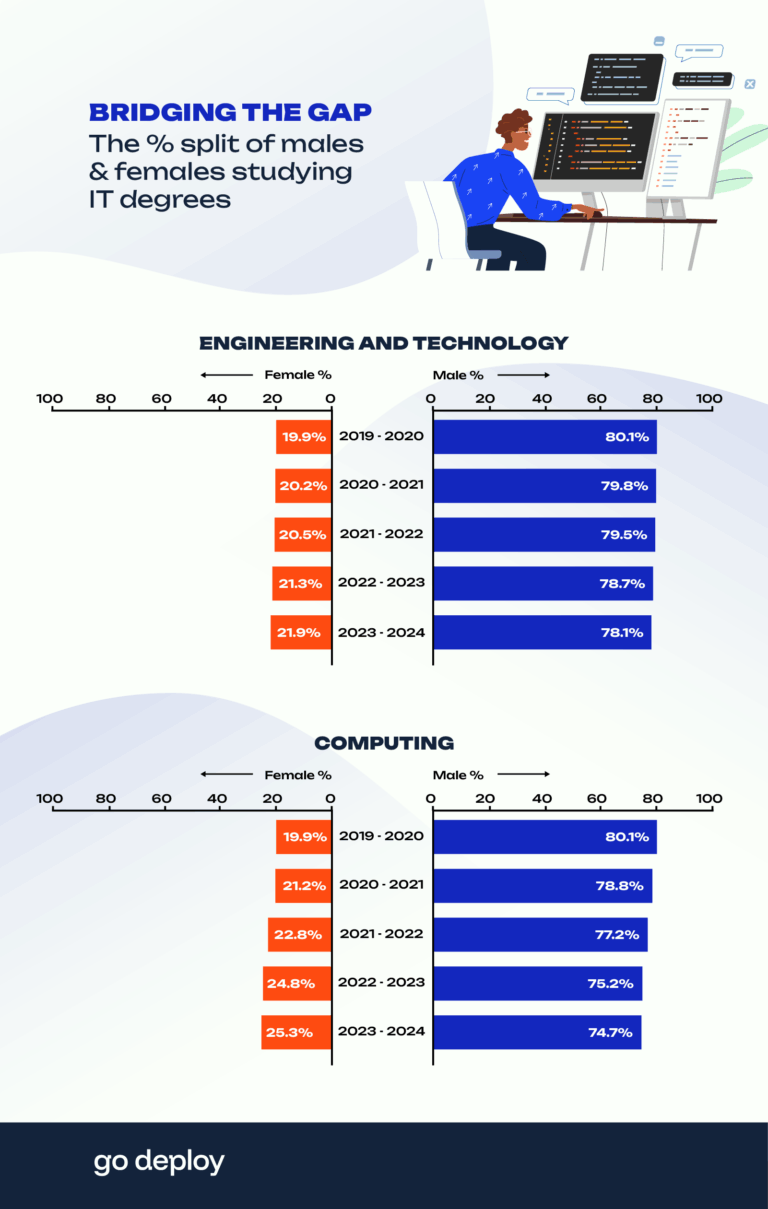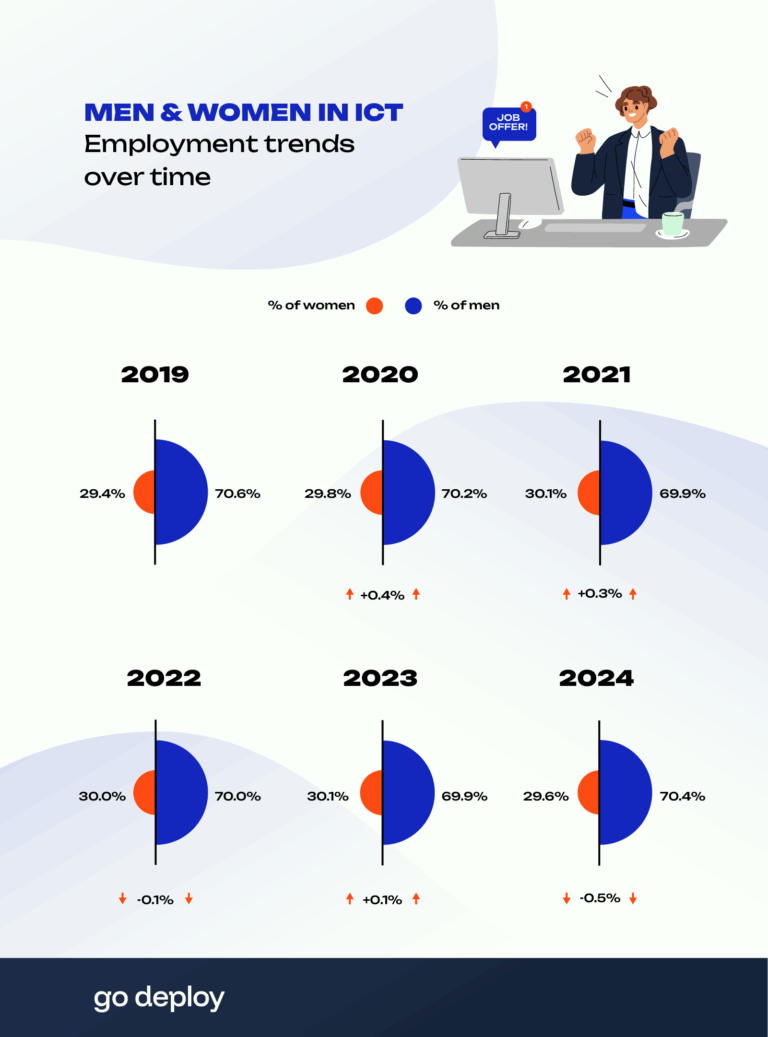The technology sector has experienced real growth in the number of tech-focused start-ups. With this comes a rise in interest in studying IT-related subjects, but with what was once a male-dominated field, are we seeing progress in attracting more females to tech?
Our latest research dives into data from Higher Education Student Statistics (HESA), to find out year-on-year how many males and females are studying IT and technology-related degrees, split also by those currently in education and those who have already graduated.
We then looked into ONS employment and labour statistics to determine the split of males and females in Information and Communication job roles over the past 5 years.
Key takeaways:
- A quarter of students studying computing degrees are now female
- Over the past five years, there’s been a 2% increase in the share of females studying engineering and technology degrees
- 70.4% of Information and Communication roles in the UK are filled by males
Engineering and Technology, and Computing degrees see growth in gender equality
Over the past five years, both Engineering and Technology, and Computing degrees have seen an increase in the balance between males and females studying – though we’re still far off from a 50/50 split.
Previously, just 19.9% of those studying engineering and technology degrees were female – this has now improved to 21.9% in 2024. Making even greater progress, the share of females studying computing has shot up from 19.9% in 2019 to 25.3% in 2024.

The gender split of undergraduates sees a slight improvement
Focusing specifically on undergraduates, the balance between males and females studying has seen a slight improvement.
In the academic year 2019/20, 18.2% of those studying engineering and technology were female. Fast forward to 2023/24, and this number has climbed to just below 20% (19.8%).
Computing studies have shown even more of an improvement, with female undergraduates now making up 21.1% – a 4% improvement from 17.1% in 2019.
Engineering and Technology undergraduates (%)
|
Year |
% of females studying |
% of males studying |
|
2019/20 |
18.2 |
81.8 |
|
2020/21 |
18.6 |
81.4 |
|
2021/22 |
18.9 |
81.1 |
|
2022/23 |
19.3 |
80.7 |
|
2023/24 |
19.8 |
80.2 |
Computing undergraduates (%)
|
Year |
% of females studying |
% of males studying |
|
2019/20 |
17.1 |
82.9 |
|
2020/21 |
17.7 |
82.3 |
|
2021/22 |
18.3 |
81.7 |
|
2022/23 |
19.9 |
80.1 |
|
2023/24 |
21.1 |
78.9 |
Progress continues with the gender split of postgraduates
Once again, we see progress in the equality of male and female postgraduate students studying tech degrees over the past five years.
Engineering and technology degrees have seen a just under 2% increase in female postgraduates, equating to just over 3,000 more female students.
Encouragingly, postgraduate students with computing degrees have risen more than 5% over the past five years – a growth of 12,000 females earning the certificate.
Engineering and technology postgraduates (%)
|
Year |
% of females studying |
% of males studying |
|
2019/20 |
25.4 |
74.6 |
|
2020/21 |
24.8 |
75.2 |
|
2021/22 |
24.6 |
75.4 |
|
2022/23 |
26.1 |
73.9 |
|
2023/24 |
27.3 |
72.7 |
Computing postgraduates (%)
|
Year |
% of females studying |
% of males studying |
|
2019/20 |
29.3 |
70.7 |
|
2020/21 |
30 |
70 |
|
2021/22 |
32.1 |
67.9 |
|
2022/23 |
34.5 |
65.5 |
|
2023/24 |
34.4 |
65.6 |
Males continue to dominate the IT job sector
Another area we explored was the IT employment sector in the UK. We examined Government data over the past five years to find out whether or not we’ve seen progress in the split of males and females employed in the industry.
Spoiler alert: we haven’t.
Remarkably, over 70% of the workforce in IT is made up of males. This equates to 4.6 million. Over the past five years, we’ve seen a growth of 1.7 million male workers in IT – this compares to just 300,000 more females over the same period of time.

Methodology:
Using data from the Higher Education Statistics Agency (HESA), we looked at the number of male and female students across undergraduate and postgraduate studies, focusing on Engineering and technology, and computing degrees for academic years ranging from 2019/20 to 2023/24.
In addition, we looked at ONS data for the number of males and females employed within Information and Communication roles over the past five years to see whether or not we have made strides forward to gender equality in the workplace. Data collected May 2025.




